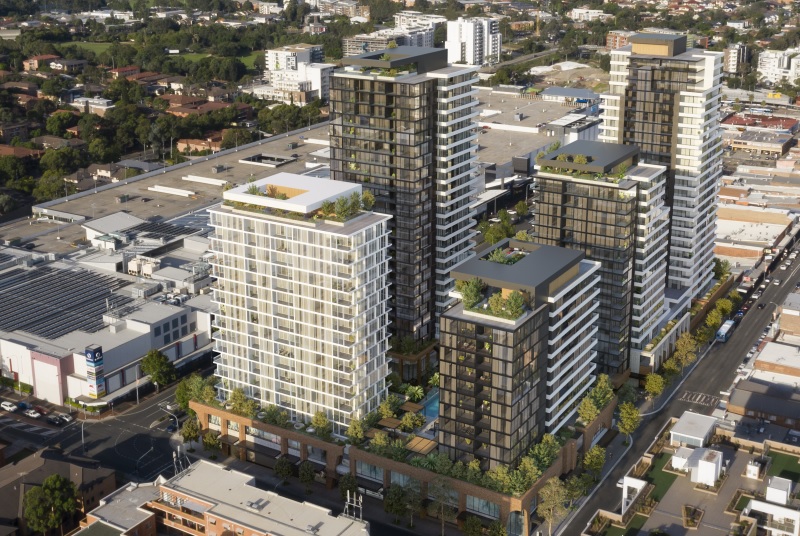Coronation Makes $293m Build-to-Rent Plans
Coronation Property are moving forward with plans to build 790 build-to-rent apartments in western Sydney’s Merrylands at an estimated cost of $293 million.
The developer lodged an application for the site at 52-54 McFarlane Street next to the Stockland Merrylands Shopping Centre.
The plans by Turner Architects include five mixed-use buildings of 13-25 storeys, retail and commercial tenancies and a child care facility over four levels of basement parking.
Coronation acquired the site in January for $41 million from Stockland as a seed investment for their build-to-rent business.
The latest application builds on the previous owner’s approved plans in 2017 for five high-density towers with 562 residential apartments, as well as 4,500sq m of ground-level retail and basement parking.
Almost 50 per cent of the units in the Coronation application are studio or one-bedroom apartments to cater towards “strong population projections” of the Merrylands-Holroyd precinct.
Related: Sydney’s Most Sought-After Development Projects

There are 129 studios, 264 one-bedroom, 379 two-bedroom and 18 three bedroom apartments planned across the five buildings in Greater Western Sydney.
According to a residential market assessment by AEC Group, the units would suit lone person households, key workers and single-parent families, providing a variety of housing typologies including smaller, more affordable apartments.
“Household sizes are forecast to progressively become smaller, the Central City District Plan projection for single person households is expected to increase by 81 per cent within 20 years to 2036,” the report said.
“Although sales volumes for two-bedroom units dominate the Merrylands market and are considered the most popular from both an owner occupier and investor viewpoint, overall demand for studio and one-bedroom apartments has also strengthened in recent times, largely due to their more affordable price point.
“As identified within our analysis, 60.6 per cent of the households in Merrylands earn under $91,000 per annum which may partially explain the comparatively high proportion of renters in the region, at 45 per cent.
“This necessitates a growing need for more affordable housing within the suburb.”
The emerging build-to-rent sector has attracted a lot of interest in response to housing affordability concerns and economic conditions which have deteriorated during Covid-19.














